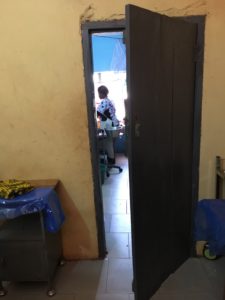
           During a break at a renewable energy meeting sponsored by LPEA (our electrical co-op) several years ago, a friend and I discussed the pros and cons of generating power with coal. She said that she would favor renewable generation of our energy if it didn’t require subsidies.
We both are plagued by asthma and carry expensive inhalers to use if we have trouble catching our breath. My friend admitted that our air would be better if we weren’t downwind from coal burning power plants. However, it bothered her that some of the taxes she paid went to support a photovoltaic manufacturer that had recently declared bankruptcy.
She expressed surprise when I told her that fossil fuel companies also received tax support. Indeed, subsidies for fossil fuels are more than 5 times larger than subsidies for renewable energy! Worldwide subsidies cost an astounding $444 Billion. In the USA $24 Billion in taxes go to fossil fuel subsidies. That is more than $73 of our tax money for each American, every year!
But subsidies are not the only cost we pay to support the fossil fuel industries, which include coal, oil and natural gas. Burning fossil fuels also costs us all because they are one of the largest causes of climate change—but even that is not the most immediate cost. The most serious cost of fossil fuels is to our health.
It is estimated that 91,045 people die annually as a direct result of air pollution in the USA. In addition, air pollution increases the number of people who suffer from emphysema, heart attacks and strokes—and asthma. Figures from the World Health Organization state that 36% of lung disease deaths, 27% of deaths from heart disease and 34% deaths from strokes are caused by air pollution. That is a huge toll—much larger, but more insidious, than the death rate from terrorism.
What does this have to do with population? My goal is for people to be healthy and to have healthy children. Ideally children should be planned, loved and well cared for. This means that we need to keep our planet healthy, too. Access to voluntary contraception is one of the best ways of assuring these goals. It is also important to minimize our impact on the planet, for our children’s sake.
When people think that they are saving money by having inexpensive electricity, they don’t know the true cost of their power. What is on the bill from LPEA is only a small fraction of the real cost. It is estimated that health care necessitated by the air pollution from fossil fuel-generated power costs over 9 times what we pay the power company! The rate LPEA charges is 12.56¢ per kilowatt-hour. Therefore, the true rate is $1.14 per kilowatt-hour if you include the cost of health care necessitated by air pollution from conventional power sources.
What does this mean to our country? If you look at the period from 2007 to 2015, during which there was rapid growth of solar and wind generation, almost 8000 lives were saved by not generating electricity with fossil fuel. About $70 billion in health care costs was saved by this renewable energy rather than business as usual.
In addition to more immediate health costs, climate change is already causing damage through storms, forest fires and other destruction. It is difficult to put a value on money saved by averting greenhouse gas emissions, however the value of keeping 1 metric ton of CO2 out of the atmosphere is in the range of $35. The savings from slowing climate change in this 8-year period of increasing wind and solar is estimated to be $56 Billion!
Only about 7% of our nation’s “juice†currently comes from wind and solar. Think what a difference it would make to our health if 20% or even 50% of all the electricity used in the country came from renewables. A first step is to get rid of subsidies to the unhealthy fossil fuel industries.
I agree with what Davin Montoya, board president of LPEA, wrote last year: “In fact I think the entire board supports renewable energy; but it should be done in a responsible way. I will only support a program that benefits the entire membership not a select few.†My conclusion, knowing the hazards of air pollution from burning coal to generate electricity, is different from Montoya’s. Renewable energy benefits us all in helping us to be healthier and to spend less on medical care.
© Richard Grossman MD, 2017
